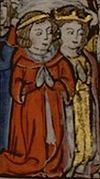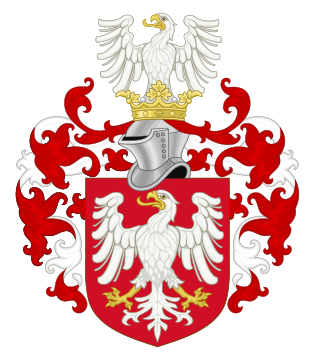
The House of Piast was the first historical ruling dynasty of Poland. The first documented Polish monarch was Duke Mieszko I. The Piasts' royal rule in Poland ended in 1370 with the death of King Casimir III the Great.
Queen Elizabeth, Queen Elisabeth or Elizabeth the Queen may refer to:
A queen consort is the wife of a reigning king, and usually shares her spouse's social rank and status. She holds the feminine equivalent of the king's monarchical titles and may be crowned and anointed, but historically she does not formally share the king's political and military powers, unless on occasion acting as regent.
A prince consort is the husband of a monarch who is not a monarch in his own right. In recognition of his status, a prince consort may be given a formal title, such as prince. Most monarchies do not allow the husband of a queen regnant to be titled as a king because it is perceived as a higher title than queen, however, some monarchies use the title of king consort for the role.
A queen dowager or dowager queen is a title or status generally held by the widow of a king. In the case of the widow of an emperor, the title of empress dowager is used. Its full meaning is clear from the two words from which it is composed: queen indicates someone who served as queen consort, while dowager indicates a woman who continues to hold the title from her deceased husband. A queen mother is a former queen consort, often a dowager queen, who is the mother of the reigning monarch.
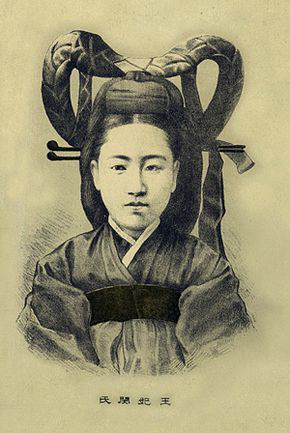
Empress Myeongseong was the official wife of Gojong, the 26th king of Joseon and the first emperor of the Korean Empire. During her lifetime, she was known by the name Queen Min. After the founding of the Korean Empire, she was posthumously given the title of Myeongseong, the Great Empress.
The Malay language has a complex system of styles, titles and honorifics which are used extensively in Brunei Darussalam, Malaysia and Singapore.
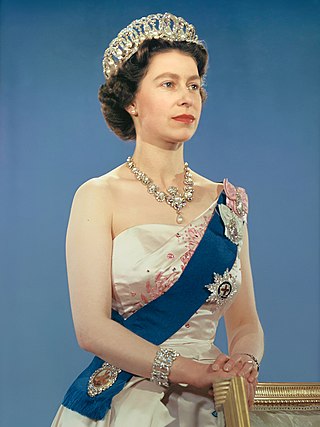
A queen regnant is a female monarch, equivalent in rank, title and position to a king. She reigns suo jure over a realm known as a kingdom; as opposed to a queen consort, who is married to a reigning king; or a queen regent, who is the guardian of a child monarch and rules pro tempore in the child's stead or instead of her husband who is absent from the realm, be it de jure in sharing power or de facto in ruling alone. A queen regnant is sometimes called a woman king. A princess, duchess, or grand duchess regnant is a female monarch who reigns suo jure over a principality or (grand) duchy; an empress regnant is a female monarch who reigns suo jure over an empire.
Princess consort is an official title or an informal designation that is normally accorded to the wife of a sovereign prince. The title may be used for the wife of a king if the more usual designation of queen consort is not used.
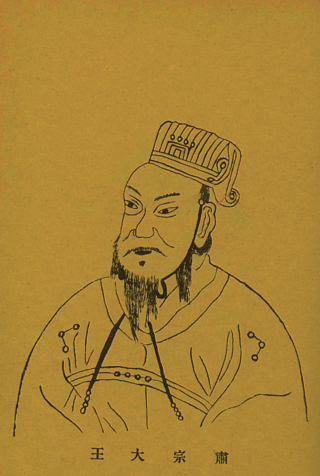
Sukjong, personal name Yi Sun, was the 19th monarch of the Joseon dynasty of Korea. A skilled legislator, he caused multiple changes in political power throughout his reign, by switching among the Namin (Southerners), Seoin (Westerners), Soron and Noron political factions.

There were three Imperial Orders of the Mexican Empire, which were Orders of chivalry created to reward Heads of state and prominent people during the two periods of the Mexican Empire—the Imperial Order of Guadalupe, the Imperial Order of the Mexican Eagle, and the Imperial Order of Saint Charles.
This page is based on this
Wikipedia article Text is available under the
CC BY-SA 4.0 license; additional terms may apply.
Images, videos and audio are available under their respective licenses.


